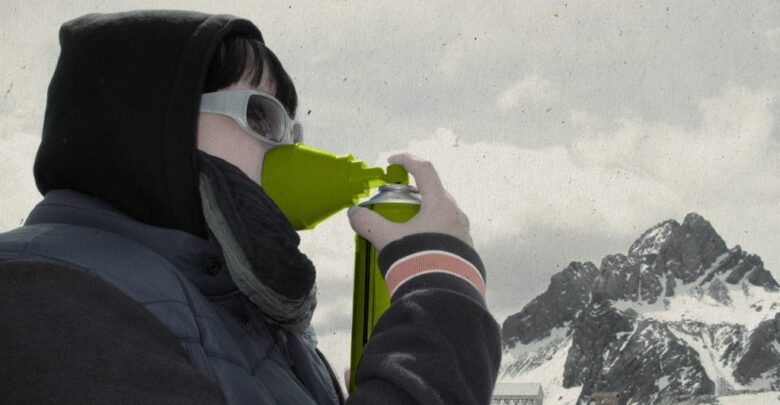The Best Ways to Deal with Altitude Sickness

Altitude sickness is one of the common parts of everyone’s life at least once that happens while hiking or even when going on some height or top of the mountain. It is quite common but it is always better to be prepared for it. There are many signs of such sickness that clearly indicate that the body is not comfortable with being exposed to the elevation which is quite high, it shows the symptoms within less span of time. This type of sickness is quite common when people travel or even climb or go to a high elevation at a faster pace. The higher it climbed, the lower would be the air pressure and level of oxygen that the body can get. That is when the problem happens as the body takes time to adjust to such a shift and hence altitude sickness prevention should be followed.
Symptoms of altitude sickness
The signs may vary from mild to serious ones. That is why before travelling to a high altitude, it is important to ensure that such signs are cleared. This would help in catching up the altitude sickness before it gets quite risky. Some of the mild signs shall include:
l Headache
l Dizziness
l Feeling
l Faster Heart Rate
l Trouble Sleeping
l Nausea
l Shortness Of Breath
l Loss Of Appetite
l Preventing self against the altitude sickness
There are many natural ways by which altitude sickness prevention can be maintained. It is of course important for the person to take some time to get adjusted to high elevation when there but these tips can help in dealing with the whole process without much of the hassle. This shall include:
Slow climbing
It is important for the body to climb slowly because quickly climbing can make the body fatigued and weak as well. The body requires at least two or three days of getting higher in order to adjust to all the possible changes. It is always better to avoid driving or flying too high altitudes. Instead, it is advised to go high every time, take some rest, and then continue the next day. If there is flying involved, it can be done from a lower altitude after 24 hours of rest so that the body can be adjusted well.
This type of altitude sickness prevention is advised even when travelling on foot. It is always better to plan the trip in such a manner that there should be stopping points at the low elevation even before reaching the final location. It is advised to travel not more than 1000 feet every day and then plan for the rest of the time for every 3,000 feet as going higher.
Eating carbs
Not many people are aware of this but, it is one efficient altitude sickness prevention that is advised. To eat extra carbs on such occasions is always better. When at a high altitude, the body requires more energy which only calories can offer. That is why one must carry enough healthy snacks especially the whole grain-based that always works.
Avoiding alcohol Consumption
Options like cigarettes, alcohol and medicines such as sleeping pills are likely to enhance the altitude sickness signs and make it even worse. It is advised not to smoke, drink, or even take sleeping pills during the whole trip while going to the high altitude. Those who wish to still take a class or drink can wait for at least 48 hours so that the body gets time to adjust even before alcohol is being added to the mix.
Stay hydrated
No matter whether it is a hike or simply flying or driving to a higher elevation, the body just the way requires calories, also requires a lot of water. It is important to stay hydrated as most of the body depends on it. It also helps to prevent the problem of altitude sickness. Drinking water on a regular basis during the climbing process would also give the body much of the energy and keep it fit enough so the risk of dehydration and fatigue don’t occur during elevation.
Do not stress
Of all things, understand the body requirements. There is no point in stressing so much just to reach the goal. Because it does not make any sense to give the body pressure and reach the goal and get tired. One of the careful altitude sickness prevention is to not take stress or even give the body any of such pressure. It is good to climb at a pace that is comfortable. Walking too fast or engaging in exercise can always be a tiring job. That is why take time and go only with the speed that the body can take it.
Focus on the sleeping position
One of the best altitude sickness prevention that can always work is to set the sleeping position right. If the individual sleeps lower it would reduce the symptoms of altitude sickness. Often, such sickness may get worse when the person sleeps. That is why it is better to go for the high climb during the daytime and then get back to the low altitude so that the body gets the proper sleep. Those who are planning to climb more than 1,000 feet every day must take this very seriously.
Medication
This may seem to be obvious but of course, it cannot be ignored. There is no doubt that medication needs to be avoided as much as possible but when the matter gets serious, it is always better to control it. That is why options like acetazolamide are the best option against altitude sickness. This type of medicine is specially designed for treating the problem of glaucoma. However, the way it shows the effect has a positive result on altitude sickness as well. It is advised to meet the doctor and speak on this to get the prescription as one cannot get it easily from the market.
Conclusion
Those who create any kind of mild altitude sickness must follow the above altitude sickness prevention tips as it would work. Also, it is advised to stop climbing further high and get back to a low level of elevation. The noticeable signs would then go away on their own when the person moves to a low altitude.





